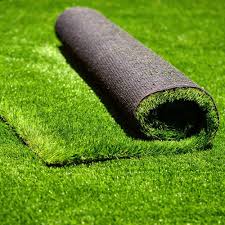Carpet Grass: Lush Turf for Versatile Landscaping
Discover the beauty and versatility of carpet grass, a popular turf option known for its dense, carpet-like growth. Ideal for warm climates, it thrives in both sunny and partially shaded areas, making it perfect for all your landscaping needs.
5/24/20255 min read


Understanding Carpet Grass
Carpet grass is a type of turf that is widely appreciated for its lush appearance and versatility in landscaping. Characterized by its dense, carpet-like growth, this grass species is primarily used in warm climates and is known for its ability to thrive in both sunny and partially shaded areas. This type of grass can be especially beneficial for homeowners and businesses looking to create visually appealing outdoor spaces with minimal effort.
One of the primary benefits of carpet grass is its low maintenance requirements. Once established, it often requires less watering and mowing compared to other grass types, making it an excellent choice for individuals seeking to reduce their landscaping upkeep. Additionally, carpet grass exhibits a high tolerance for foot traffic, which makes it ideal for parks, playgrounds, and residential lawns where children or pets are frequently present. Its durability contributes to its longstanding popularity among various landscaping projects.
When considering carpet grass, it is essential to differentiate between its natural and artificial forms. Natural carpet grass, while often favored for its aesthetic qualities and environmental benefits, requires ongoing care such as fertilization and pest management. On the other hand, artificial carpet grass offers a virtually maintenance-free alternative that retains its vibrant color and texture throughout the year. This can be particularly advantageous in regions where maintaining natural turf is challenging due to harsh weather conditions.
In terms of types, several variations of carpet grass are available to suit different landscaping needs. These typically vary in terms of color, texture, and resilience. Selecting the appropriate type of carpet grass that best fits individual preferences and environmental conditions can further enhance the beauty and functionality of outdoor spaces. Overall, the advantages of carpet grass make it a favored choice for a variety of landscaping applications, appealing to homeowners and commercial property owners alike.
Where to Buy Carpet Grass Locally
Finding carpet grass locally involves a strategic approach that encompasses both online and offline resources. Begin by exploring local directories such as Yellow Pages or Yelp, which can direct you to nearby garden centers, nurseries, and home improvement stores. These establishments often carry a variety of turf options, including carpet grass, and can provide expert advice on your selection.
Local retailers such as Home Depot and Lowe's typically stock carpet grass, alongside other turf and gardening supplies. Smaller, independent garden centers may also offer a wider selection or even specialty varieties of carpet grass that are well-suited for your specific climate. Additionally, visiting local nurseries can yield valuable insights, as many have knowledgeable staff who can assist you in selecting the right type of grass for your yard.
Online resources can also be a beneficial avenue for sourcing carpet grass. Websites such as Amazon and eBay, alongside dedicated gardening sites like Gardening Direct or The Home Depot's online portal, often provide delivery options for various types of carpet grass. This can be especially convenient if physical stores do not carry the specific variety you want. When purchasing online, be sure to review customer ratings and comments to gauge the quality of both the product and the supplier’s service.
When selecting a supplier for carpet grass, consider factors such as the quality of the grass, pricing, and customer service. Requesting samples or inquiring about the grass's origin can provide assurance of its quality. You might also want to compare prices among different suppliers to ensure you are getting a fair deal. Ultimately, having a reputable source can make a significant difference in the establishment and longevity of your carpet grass lawn.
Choosing the Right Type of Carpet Grass
Selecting the appropriate type of carpet grass is critical for achieving a lush and thriving lawn. Several factors should be considered, such as the local climate, soil type, and the intended use of the lawn. These elements will significantly influence the performance and longevity of the carpet grass chosen.
Natural carpet grass varieties, including zoysia, fescue, and Bermuda, are popular for their aesthetic appeal and environmental benefits. These grasses require specific growing conditions; for instance, Bermuda thrives in warm climates and well-drained soils, while fescue is suitable for cooler regions. Proper maintenance practices, including regular mowing, fertilization, and watering, are essential for natural grass to flourish. Moreover, natural carpet grass is often preferred for residential lawns, play areas, or sports fields due to its durability.
On the other hand, artificial carpet grass offers an appealing alternative for those seeking low-maintenance solutions. Synthetic turf eliminates the need for mowing, watering, and fertilizing, making it an ideal option for busy homeowners or commercial spaces. However, it is crucial to consider the installation costs and the specific requirements of the synthetic material. Notably, while artificial grass may require less upkeep, it lacks the natural benefits provided by real grass, such as cooling effects and carbon dioxide absorption.
Green carpet grass, or hybrid varieties, represent another innovative option that seeks to combine the best of both worlds. These types often exhibit the visual charm of natural grass while incorporating some resilience and ease of maintenance akin to artificial options. When assessing the best choice, buyers should consider personal preferences, the expected use of the lawn, and specific environmental conditions to ensure that they select the carpet grass that meets their needs satisfactorily.
Installation and Maintenance Tips for Carpet Grass
Carpet grass, whether natural or artificial, can transform your outdoor space into a lush green area. The installation process for both types is crucial to ensuring longevity and aesthetic appeal.
To begin with natural carpet grass, the site preparation is paramount. Start by assessing the existing soil. Remove any debris, rocks, and weeds. It is advisable to till the soil to a depth of about 2-3 inches, allowing for better drainage and root penetration. Following this, level the surface to create an even base. If necessary, you may want to test the soil pH and amend it with lime or sulfur to achieve optimum conditions for grass growth.
Next, when laying natural carpet grass, ensure that the soil is moist but not soggy. Place the grass sod pieces tightly together in a staggered manner, similar to brickwork. This arrangement minimizes gaps where weeds can grow. After laying the sod, roll it with a heavy roller to promote good contact with the soil.
For artificial carpet grass, the process starts similarly with site preparation. Lay down a weed barrier fabric after leveling the area, followed by crushed granite or sand as a base material. Next, unroll the artificial turf, aligning the edges properly. Use glue or adhesive tape at the seams to secure the sections firmly. Once in place, infill with silica sand to stabilize the grass fibers.
Maintenance is essential for keeping your carpet grass thriving. For natural grass, regular mowing, typically at a height of about 2-4 inches, encourages denser growth. Fertilizing at the beginning and midpoint of the growing season will provide the necessary nutrients for lush greenery. Additionally, implement a pest control regime as required to prevent any infestations that might harm your grass.
In contrast, artificial grass is relatively low-maintenance. Rake it occasionally to prevent matted grass fibers and ensure proper drainage. Occasionally, you may need to wash the surface to remove debris and maintain its appearance.
By following these installation and maintenance tips, you can enjoy a beautiful carpet grass area that adds value and aesthetics to your property.
